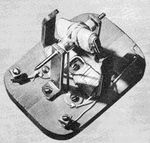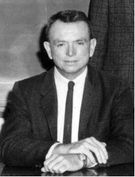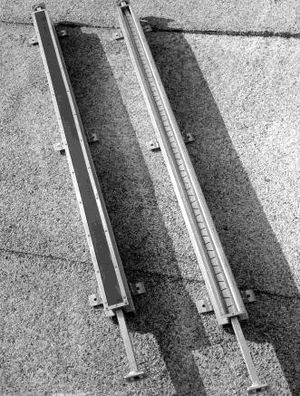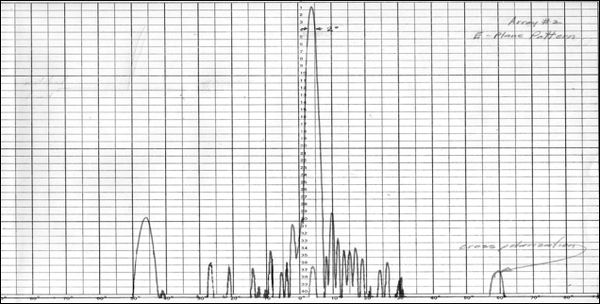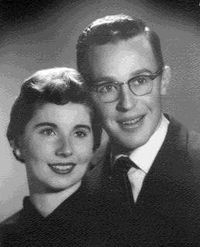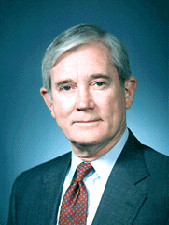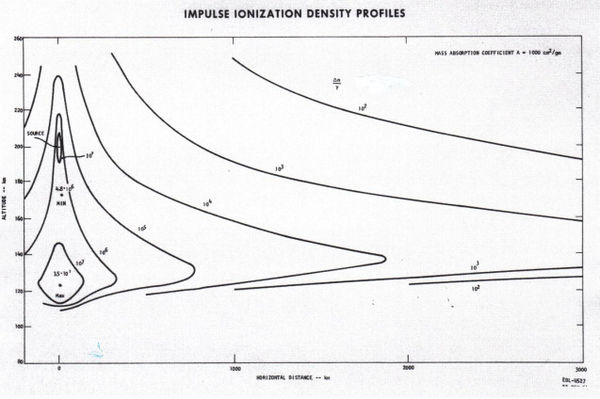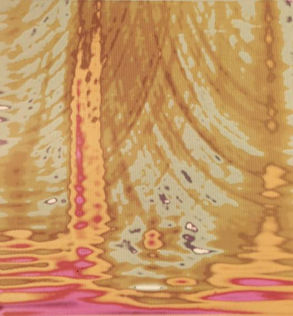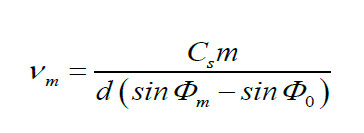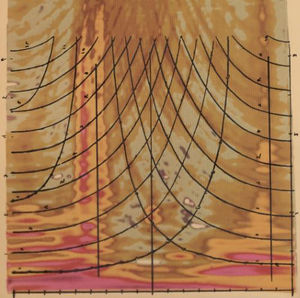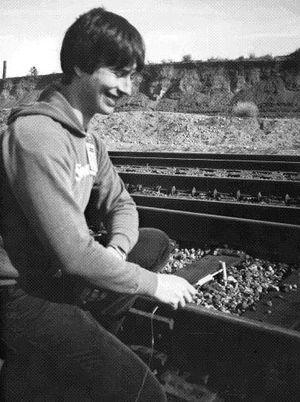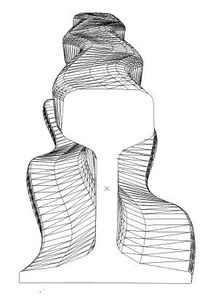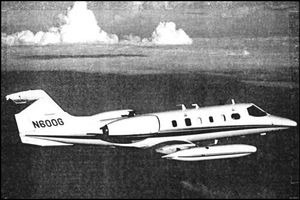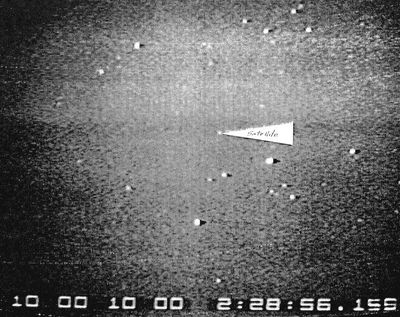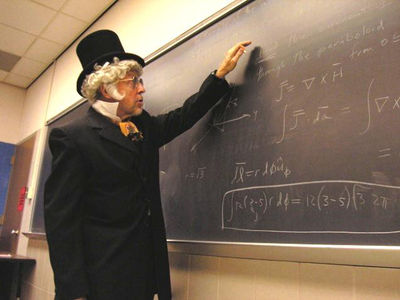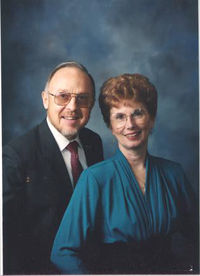First-Hand:Maxum Memoirs: Climbing Technical Mountains
Maxum Memoirs 1954-2008 --
Technical Memoirs in Electrical and Optical Engineering
with a historical perspective by Bernard Maxum, PhD,
34 years in aerospace industry through Project Management, plus
20 years in academia through Professor and Chair of the Electrical Engineering Department,
Texas State University
These technical memoirs are submitted In response to an invitation and request by Dr. Gordon W. Day, our illustrious President of the IEEE (Institute of Electrical and Electronic Engineers). The IEEE was created 50 years ago by the merger of the original IRE (Institute of Radio Engineers and the AIEE (American Institute of Electrical Engineers). Because I am a charter member of the IEEE and had maintained continuous membership, Dr. Day, invited me and other 1st 50-year members to submit our technical memoirs for publication in the IEEE Global History Network (GHN), subsequently changed to Engineering and Technology History Wiki (ethw).
I start with my personal reflections so that the reader may better garner yet another example of how simple beginnings can and did grow into some level of technical accomplishment and contributions to our country and to the society that so many others have also achieved. In the body of these memoirs I have attempted to illustrate the breadth and depth of technical areas encompassed by my half century of work and how an engineering education provided by excellent and devoted educators can and did provide a down-home kid from a navy yard town the necessary tools for resolving a myriad of challenges that arose during the 54 years from 1954 through 2008 when I retired. [Publications after 2008 are not included in these technical memoirs].
Since major world events impacted my life and positively affected my career assignments, I have inserted these events in italics at appropriate places in the chronology of these memoirs.
These memoirs are written as much for the non-technical family and friends as well as the technical, so, some of the descriptions may be a little tedious for the latter.
Humble Beginnings
I was born in 1931 when the United States of America was still reeling from the Stock Market Crash of 1929 and the ensuing Great Depression that encompassed the world. The US unemployment rate at that time was over 16% and would rise to nearly 25% by 1933. The depression had spread through Great Britain, Europe including France, Germany, Italy and most of the rest of the world nations.
My father was fortunate to have a job as a boilermaker at the Bremerton Naval Shipyard. My paternal grandfather was an electrician and my maternal grandfather was a plumber. My mother had one year of college education. My father had not completed his high school proficiency until later in his adult years. Nevertheless, they were all highly motivated and accomplished much given their status in life during these difficult times. As a youth, I realized that my grandfather built a successful plumbing supply store in conjunction with serving the plumbing needs of his community. My father rose to head up the Boiler Shop at the Bremerton Naval Shipyard. My mother went to work after raising her children and supported a part of my first year of college. They were all loving and supportive parents and grandparents and encouraged us children to rise to our full potential.
As a boy I was busy with model building, map making, woodworking, tinkering with electrical and electronics, and at one point built and demonstrated a working electric motor, which ran off a D-size battery, shown in the photo. I earned twenty-four boy scout merit badges, three more than required for Eagle but did not make that level because I barely passed swimming and could not visualize saving a life of another from drowning, which was required for the Life Saving merit badge. I did set goals, however, and remember that I was one of only three in the scout troop to reach the top of one of the mountains in the Olympic Peninsula in Washington State. Later in life I considered many of the goals that I reached metaphorically as “climbing another mountain”, which influenced the title of these memoirs. An example of such a mountain was that I learned to swim by first learning to scuba dive and then garnering a certain level of proficiency diving Hawaii, the Bahamas, and the Blue Hole in Belize, such that swimming became natural).
World War II clouds
As a young boy I had overheard my parents, relatives and their friends talking about the threat of a war in Europe that a rising German dissident named Hitler was intent on reversing his country's loss in a prior war that was at that time referred to as “The World War” – a war that took place when my parents were teenagers, which history later named World War I. By 1939 (at age 8 and 9) the new war had expanded considerably involving many countries. New words like the “Fuhrer”, referring to Hitler, and the “Third Reich”, referring to his movement to re-establish German superiority, “allies” and “axis” referring to those countries who had sided against and with Germany, were frequently used. Although these events, coming from a far-away place in Europe that I had to look up on the world map, seemed far removed to me, they did eventually effect my career opportunities for the positive, despite the prevalent fear in the wind at that time .
Having recently experience a world war, the US Government devoted some of its sorely needed resources in a depression environment to support the allies, but as late as 1940 was hesitant to directly enter the fray. This reluctance quickly vanished on December 7th 1941, the day that Japanese naval air forces attacked the US Naval facilities at Pearl Harbor, Hawaii killing thousands of American military and causing severe damage to the US Pacific Navy Fleet and the Air Force facilities there. The next day the US and Great Britain declared war on Japan and three days later Germany declared War on America and quickly launched U-Boat attacks on the US merchant fleet sinking over 600 ships in 1942, which Historian Michael Gannon called “America’s Second Pearl Harbor, or a second example of America being asleep to the impending threat. Thus the “Second World War” or “World War II”, as it became named, was launched with full intensity and with unprecedented universal support by the American citizens with unparalleled patriotism toward the USA by its citizens.
Immediately after the Pearl Harbor attack, the Army installed hundreds of hydrogen blimps all around the Bremerton Shipyard to mitigate dive bombers, because of the fear that the Japanese may be continuing West to bomb Bremerton where we lived. Without satellites or over-the-horizon radar we had no idea where the Japanese Navy was. I remember during the Winter of 1942 after dark, while I was in my room on the second floor of our home, hearing a huge explosion and seeing the sky light up overhead. We all thought “the Japs”, as we unrespectfully referred to them, had bombed us. However, there were no further explosions as we were hiding in fear with all lights out. We soon learned by radio that one of the Hydrogen filled blimps had caught fire and exploded sending the thousand foot ¼ inch cable to the ground. After that event the blimps were filled with helium, which has less lifting force but inert to fire
At 10 years old I got a job selling newspapers at the Bremerton Naval Shipyard. As the damaged ships from Pearl harbor, and later from subsequent Pacific battles, came into the shipyard for repair I had almost complete access to these ships so sell papers to the sailors and officers. I became familiar with Aircraft Carriers, Battleships, Cruisers, Minesweepers and Destroyers at all levels and took particular interest in the electronic systems including radar and communication antennas.
The Great American War Machine Buildup
Because of our being caught asleep in two occasions in 1941 and 1942 on two oceans, starting in 1943 and continuing into the 50s and 60s, the United States launched the greatest and most successful military buildup in its history and arguably in the history of the world, bringing the United States to a position of becoming the most dominant and powerful nation in the world offering unprecedented opportunities in technological industries especially electrical engineering companies.
World War II Ends in 1945/The winds of the Cold War Begin
After severe bombing by US and British Air Forces as well as a horrendous battle on the Eastern front between the USSR and Germany with millions of lives lost on both sides, Germany surrendered unconditionally to the allies on June 7th,,1945 (at age 13). In August atomic bombs were dropped by the US on Hiroshima and Nagasaki, Japan And on September 2nd 1945Japan surrendered unconditionally to the US. But before the dust settled The “Cold War” with the USSR had begun.
The Cold War
During the postwar period between 1945 and 1950, the former allies—US, Great Britain, France and the USSR—who were previously united only because of their common enemy, Germany, sharply split now that Germany was out of the picture, with the USSR becoming the common enemy to the remaining three. Churchill (GB), Roosevelt (US) and Stalin (USSR) met at Yalta and agreed to divide up Germany and Berlin separately, each into four zones to be occupied by USA, USSR, GB, and France. A high barbed-wire fence was constructed separating East Germany from West Germany, and since Berlin, the German Capitol, fell in the Western section, another wall was created within Berlin dividing East Berlin and West Berlin. The Eastern sections were occupied by the USSR while the Western section were occupied by the US, GB and France collectively. The United Nations was created ostensibly “to maintain the piece”.
At that time Russia was thought to have the superior arsenal of conventional weapons, however with the US’s display of atomic bombs in Japan it was clear to Stalin that the USSR was years behind in modern weaponry. This situation created four decades of the Cold War race. With the help of a few USSR sympathizers (spies) at the atomic facility in Los Alamos, the USSR was able to explode their first atomic bomb in 1949 bringing them closer to weapons equality. These sympathizers were later convicted of treason and executed.
During that time I finished Junior High and entered Bremerton High School. There I lettered in track, took up photography and all the industrial arts that I could. However, I discovered that I was most interested in and excelled in mathematics, physics and pre-engineering.
But, as a sixteen year old, I still lacked confidence that I could make it through college, until my Chemistry/Physics teacher, Mr. James L. Dogan, pulled me aside and encouraged me strongly to do so. Because of the impact that his confidence in me had on my life, and to honor him as my most influential High School teacher, I am posting a dossier on him. (Although this photo shows him younger, he was in his late 40s when I was in his classes.)
- James L. Dogan worked for the Bremerton School District for 30 years. He began in 1929 and resigned in 1959. He was born in 1898 and graduated from Lewis and Clark High School in Spokane, Washington, in 1918. He then attended The State College of Washington (now WSU) in Pullman, graduating with a BA in Chemistry in 1923. Following his BA degree, he did advanced coursework at the University of Washington and completed a BS in 1929. Prior to working for Bremerton, he worked in Garfield High School in Garfield, WA (1923-24); Sumner High School in Sumner, WA (1924-25); Haure High School in Haure, MT (1925-1926); and the NW Chemistry Lab in Seattle, WA (1927-28). In 1924 he had a HUGE annual salary of $1,350 per year. (This dossier was provided by Denise Zaske, Bremerton School District Historian).
Buoyed by Mr. Dogan’s encouragement, I applied and was accepted to the “big” university across the Puget Sound – the University of Washington, where I began my college education in 1950 with a small scholarship.
In those days there was still room in engineering programs for very broad and comprehensive curricula. Even though I was in Electrical Engineering I was required to take foundry, where I built and casted fireplace andirons; machining, where I turned a left-handed thread on the lathe; and surveying, where we were required to find a 1/8“ pin in a hidden stake from a starting point on the other side of campus—all of these new mountains but not directly related to electrical engineering. (Although , there is no room for such generalities in any of today’s engineering programs, I was often gratified later in life to have had first-hand exposure to these skills).
Then, as we got into the electrical engineering courses, I was most intrigued by a pair of courses called Electromagnetics[1] and Transmission Lines,[2] the latter being an application of the former – both taught by Professor Walter E. Rogers. Although, I was later privileged to take many more electromagnetics-related advanced courses from prestigious giants in the field, Professor Rogers’ courses had the greatest positive influence on my career because they introduced me to what became my choice of specialty in electrical engineering—electromagnetics. This led me into antenna analysis and design, radar systems, optics and fiber optics. All of the intriguing projects cited later in these memoirs stem from these fields.
In honor of Professor Rogers the following dossier was taken from the Centennial History of the Department of Electrical Engineering at the University of Washington 1985-2005.
- Professor Walter E. Rogers: With concerns in the mid 1940s about having too many of the EE faculty educated at Washington, the department began aggressively seeking faculty from elsewhere. Walter E. Rogers with his BS-EE and MS-EE from the University of California was hired in 1946. He specialized in Electric Fields and built a theoretical and experimental electromagnetics program infrastructure. He published his textbook Introduction to Electric Fields in 1954, which earned him an invitation to teach at M.I.T. During his tenure at UW he rose from the rank of Instructor to Professor Emeritus.
Professor Rogers had spent a great deal of time to give insightful and detailed physical descriptions of the inter-relationship between time varying electric and magnetic fields as well as physical descriptions of the vector differential operators—Divergence, Curl and Gradient—called Nabla operators.
It was much later in life that I expanded on these physical descriptions and included detailed physical descriptions of second-order Nabla operators—all the time keeping in mind Professor Rogers’ valuable descriptions. (These can be found in my book Field Mathematics…, which I cite in “Additional Years served in Academia” later in these memoirs). Nowhere in all of the literature was I able to find such detailed and comprehensive descriptions of all of the second-order Nabla operators that could be visualized physically. (Reference 57).
However, before delving further into my technical memoirs, there was another series of courses that I took at the U of W not really classified as “technical” but every bit as important. This series was called humanistic social studies or HSS. All former English classes were tied together to teach speech and report writing. Parts-of-speech, such as nouns, prepositions and verbs, and sentence-structure, such as subjects, predicates and objects, were cast into sentence diagramming, a mechanically oriented method to parse sentences, in such a way that one could put into words exactly what one had accomplished for another to understand clearly. I took to this new-found capability like a fish takes to water and carried this with me for the rest of my career when writing reports and journal papers and delivering oral presentations.
First Nuclear Bomb
By this time the Cold War was in full force. In 1951 the US detonated the first nuclear bomb, which was a thousand times more powerful than the atomic bomb and again with the help of soviet spies the USSR was able to do the same in 1953 (when I was 21). At this point the Cold war accelerated significantly and lasted throughout the remainder of my professional career, enhancing the unprecedented opportunities for me in electromagnetics and optical engineering.
While in my sophomore year I joined two electrical engineering societies—the IRE and the AIEE. Soon thereafter these organizations merged to form the IEEE, and I and many others automatically became charter members of the IEEE, which has now become the largest professional organization in the world.
As I neared the completion of my junior year at the U of W, my advisor suggested that I apply for a Summer ET at the University’s Applied Physics Laboratory in order to garner practical experience—an opportunity not broadly offered. Although the work at APL was not in my primary field of interest, it gave me practical experience with vacuum tube amplifiers and oscillators and an opportunity to write my first technical report.[3] In those days the primary way to amplify electrical signals was with the use of vacuum tube amplifiers. Later, I taught students ways to amplify optical signals in optical fibers, so, as it turned out, there was some philosophical connection between electronic amplification and photonic (light) amplification—both requiring a non-linear aspect to the process of achieving amplification—thus blowing away the first of the sophomoric assumptions of “linear, isotropic and homogeneous” that are traditionally used in introductory differential equations and electromagnetics courses to make the mathematics more tractable to undergraduate students.
Later, I will discuss important cases where anisotropic and/or inhomogeneous media were important to the task at hand. I have long felt that the undergraduate mathematics taught in the engineering disciplines and in physics falls quite short of what is needed for modern technology, such as in fiber optics and materials science and engineering. My book Field Mathematics (Reference 57) attempts to fill this serious gap.
The remainder of this technical memoir deals with some of the fascinating and intriguing projects that followed from these early beginnings.
Graduate School Years, with early Industrial Experience
As I brought my undergraduate education to a completion and having decided to focus my career on applications of electromagnetics, I applied to several organizations and received over two dozen job offers (fortunately at a time when engineering graduates were in great demand at least in part because of the great influx of money to address the needs of the Cold War). The top two job offers from my vantage point were from Bell Telephone Laboratories in New Jersey and from Hughes Aircraft Company in California. I accepted the Hughes offer as a Member of the Technical Staff in their Microwave Antenna Department with a fully paid Hughes Scholarship on the Masters Program in Electrical Engineering at the University of Southern California.
Again, I concentrated on mathematics[4][5][6] and electromagnetics.[7][8][9][10] Focusing on antenna array theory with radiating array elements made from slotted openings in waveguides, and basing my analyses on two theoretical papers by Stevenson[11] and Betha,[12] I built a working antenna of resonant slots that yielded a prescribed antenna pattern to provide a uniform painting of the terrain ahead and below a low-flying aircraft for imaging objects on the ground. Such a painting required a csc2θ cot1/2θ pattern. I then showed in actual field tests that such theoretical analyses yielded close comparisons between theory and experiment.
My theoretical and experimental work in antenna arrays was recognized by my superiors as worthy of recognition and I was encouraged to present my results at a forthcoming conference in Washington, DC. Soon thereafter I found myself standing before a large group of seasoned researchers at the 1958 Joint Meeting of the International Scientific Radio Union, the Institute of Radio Engineers and the National Bureau of Standards presenting my first conference paper.[13] To say that this down-home kid in his mid twenties from Bremerton with no prior experience speaking in public was frightened beyond his wits would be an understatement. Nevertheless, the presentation seemed to go well, and I went away feeling pretty good about having climbed yet another mountain, while conveying a practical application to antenna array theory that I was beginning to understand quite well.
MS EE USC
During this time I completed the requirements for the Master of Science in Electrical Engineering at USC, which was conferred on June 25, 1957—another mountain climbed.
Fan beam antenna project
Another project to which I was assigned came about as a result of a need by Douglas Aircraft Company, who requested that Hughes provide them with two fan beam antennas each with two degree half-power beam width in the longitudinal plane and 50 to 60 degree beam width in the transverse plane for calibration of their aircraft pitot tubes for airspeed determination. The concept was that by flying across two fan-shaped antenna beams that are placed on the ground at a known distance apart, and accurately measuring the time that it takes to transit that distance, the aircraft’s velocity could be determined and compared with instrument speed. Making several such timing measurements in both directions (to negate any prevailing wind bias) a statistical determination of the velocity could be made and compared with the on-board airspeed instrument data.
I was given the task of designing and building the two antennas. By applying what I learned in my advanced electromagnetics courses and transmission lines, I then designed and constructed a 54 element antenna consisting of that number of slots cut on the narrow wall of a rectangular waveguide at alternate angles specified by the theory to fit the 2 degree beam width specification. After verifying that these specifications were met, a second identical antenna was built. Figure 1 shows these two antennas–the one on the right showing the radiating slots.
Figure 2 shows the measured antenna pattern in the longitudinal plane, which distinctly demonstrates the meeting of the two degree beam width specification. Note also that the side lobe level is 28.5 db down from the peak, which is less than 1/700th of the sensitivity of the main beam peak. The measured pattern in the orthogonal plane was 57 degrees.
My manager at Hughes, who was also my graduate adviser at USC, suggested that I publish my work. I first wrote a formal paper entitled:
- Resonant Slots having Independent Control of Amplitude and Phase, (May 4, 1959),
And submitted it for publication, which was later accepted for in the IRE Transactions on Antennas and Propagation -- my first referred journal publication.[14]
While at Hughes I also wrote several research reports and Technical Memoranda:
- Energy Flux from a Slot: determination of the electric vector potential from a radiating slot in a waveguide (Aug. 16, 1956)
- Green’s Function for a Line Source with particular application to a Region Containing Parallel Conducting Cylinders (Dec. 6, 1956)
- Gaps in the Antenna Aperture, ML-49-117 (Feb. 7, 1957)
- Antenna Phase Error Effects on a Dolf-Thechebycheff Aperture Distribution, ML-49-60 (April 11, 1957)
- A Method for Determining the Aperture Distribution of Arbitrary Shaped Arrays: application to elements on the nose of an aircraft (Dec. 7, 1957)
Buoyed by these accomplishments, I decided to pursue a PhD. Up to this point all of my electromagnetic studies dealt with waves in free space or linear, isotropic, homogeneous media. According to my advisors and counselors and my own observations, I was beginning to realize that the greater technological challenges in forthcoming applications was where one or more of these restrictions did not apply despite the fact that these three assumptions made the mathematics more tractable. I decided that my PhD research should deal with these more broadly applied cases, such as with the case of plasma media, which are inhomogeneous and often anisotropic. A plasma is present whenever gaseous molecules are separated from at least one electron that would normally be bound to it. Many applications of plasma media were coming to the fore at that time.
Boeing Treatise on Electromagnetic Array Theory
In the process of seeking such applications I learned that there was a professor at the University of Washington and one or two at UC-Berkeley who were interested in plasma media research. Being familiar with UW and closer to family in Seattle, I applied to UW and was accepted on their PhD Program with Research and Teaching assignments. Boeing Airplane Company, also in Seattle, was interested in my work in waveguide antenna systems, so I worked for them during breaks from the university and in the summer. On May 25, 1959 I completed a treatise for Boeing which essentially summed up my Masters degree research[15] and provided tutorial information for designing antenna arrays to achieve a particular beam pattern shape.
- Bernard J. Maxum, Two-Dimensional Array Theory with Application to Shaped Beam Frequency Scan Antennas
Marriage to Marilyn Jo Bruce
I cite this date specifically because wedding bells sounded a few weeks later. Shortly after arriving back at UW for the Spring quarter of ’58 (a year or so earlier) I met this attractive and bright nurse, Marilyn Jo Bruce, which led to an engagement and then a wedding on June 20th 1959. As of this writing we are still together after an event-filled life of travels in the US and abroad and vacations with our family of five children (and now 12 grandchildren). (See our 55th anniversary photo on the last page).
However, before the wedding I learned that my thesis adviser was leaving the university. Immediately, I called Dr. Robert Saunders, EE Department Chairman at UC-Berkeley, and told him of my background and my situation and arranged to meet with him at Berkeley before heading to Kauai with my new bride for our honeymoon. He moved mountains rapidly and by late summer I received an offer to join the Electrical Engineering PhD Program on a fully-paid Ford Foundation Fellowship with combined duties in the Electronics Research Laboratory and teaching electrical engineering. Berkeley was generally considered one of the top schools on the West coast—Stanford, Cal Tech-Pasadena, USC, and UW also among the top at that time.
PhD Research at UC Berkeley
My new bride and I packed up and moved to Berkeley in time for the Fall Semester of ‘59. I was privileged to have Dr. Alvin W. Trivelpiece assigned as my thesis advisor. Dr. Trivelpiece was a recent PhD graduate from Cal Tech and did his dissertation on space-charge (plasma) waves from contra-streaming electron beams. (He later became Director of Oak Ridge National Laboratory.) Knowing of my interest in plasma media, he suggested that I carry his plasma-wave-interactions work further by introducing an axial magnetic field to his configuration.
During my first year at Berkeley I developed dispersion expressions for multiple charged streams in a uniform axial magnetic field, and found the tensor permittivity and perveance in gyromagnetic media necessary for calculating the interactions between the various resulting waves. I then wrote a computer program for the case of two electron streams with varying velocities and densities in the presence of an axial magnetic field. Within a year and a half I had completed a fairly thorough theoretical analysis of this configuration with all of the predicted interactions based on hundreds of computer runs. The key finding was that there were four new waves that were predicted, named cyclotron waves, and correspondingly twelve new interactions resulting from the introduction of the axial magnetic field, compared with Trivelpiece’s dissertation. These were presented at two conferences, one in New York and the other in Munich, Germany.
- B. J. Maxum and A. W. Trivelpiece, Cyclotron Wave Instabilities, Proceedings of the 19 Annual Conference on Electron Device Research, American Institute of Physics, presented by Maxum in Troy, New York.[16]
- A. W. Trivelpiece and B. J. Maxum, Cyclotron Wave Nonconvective Instability, Proceedings of the Fifth International Conference on Ionization Phenomena in Gasses, presented by Trivelpiece in Munich.[17]
Failing to convince my graduate committee in 1962 that these encouraging analytical results would suffice for earning a PhD at Berkeley, I was required to demonstrate these cyclotron-wave interactions experimentally. Under Dr. Trivelpiece’s close advisement, I developed a concept for an experiment and, thanks to Mr. George Becker at the Berkeley vacuum tube facility, we built the experimental apparatus.
Summer Institute in Plasma Physics at Princeton University
Meanwhile, I was privileged to attend the Summer Institute in Plasma Physics at Princeton University with Dr. Trivelpiece, where I met and ate with some of the world’s great physicists—Gottlieb, Frieman, Oberman, Hooke, Bennett, Bernstein, Herschberg, Greene, Zabusky, and Spitzer.
Completion of PhD
After returning from Princeton, Mr. Becker had my experimental apparatus ready for test. I completed the experimental demonstration to earn the PhD in Electrical Engineering from UC-Berkeley on September 6, 1963.[18] Shortly thereafter, with the support of The Air Force Cambridge Research Laboratory, Dalmo Victor Research Laboratory, and the Ford Foundation Fellowship through Berkeley’s Electronic Research Laboratory, I extended my research to include plasma media and we submitted the additional paper,
- B. J. Maxum and A. W. Trivelpiece, Two Stream Cyclotron and Plasma Wave Interactions
which eventually was published in the Journal of Applied Physics.[19] Although I didn’t realize it at the time, my research findings turned out to be more than an exciting scientific exercise, as will come to light next.
Alvin W. Trivelpiece
Because of the great impact that Dr Trivelpiece had on the entire remainder of my career by providing me with the encouragement, advisement and facilities to complete the PhD in Electrical Engineering at UC Berkeley, I am providing the following dossier to honor him.
- Alvin W. Trivelpiece, Professor, Department of Electrical Engineering, University of California, Berkeley from 1959 to 1966, rose through an illustrious career having served in several senior industrial and government positions including Vice President for engineering and research, Maxwell Laboratories, Corporate Vice President, Science Applications, Inc., Assistant Director for Fusion Research, U.S. Atomic Energy Commission, Executive Officer, American Association for the Advancement of Sciences and Director of the Office of Energy Research, U.S. Department of Energy. He then became Director of Oak Ridge National Laboratory (ONRL) where he served from 1989 to 2000.
Industrial Years
I launched a job search and received offers from Sylvania Electronic Defense Laboratories (EDL) in Mountain View, California, Bell Telephone Labs in Homdel, NJ and several others. By that time Marilyn and I had two beautiful daughters 3 and 2 and a new-born baby boy. Within the next four years we had two more beautiful daughters rounding our family to five children, who remain very close and have blessed us with twelve grandchildren. With both of our families on the West Coast and with the cost of travel across the United States being somewhat of an issue for us and our families, I decided to accept the Sylvania offer, declining Bell Labs for the second time.
Over-the-Horizon Radar
Sylvania had a contract with Air Force Rome Air Development Center (RADC) to develop Over-the-Horizon (OTH) Radar to detect foreign missile launches and foreign nuclear tests through the disturbance that these events make to the ionosphere. The earth’s ionosphere is an inhomogeneous plasma region several hundred kilometers above the earth’s surface where the sun’s radiation ionizes the atmospheric molecules leaving ions and free electrons that recombine only in the lower more dense atmosphere. HF radio signals, which transmit at frequencies around 10 MHz (30 meter wavelength), are used by ham operators to communicate over the horizon because at these frequencies the waves bend over in the ionosphere and return to earth bouncing repeatedly around the earth. In those days this was the only way to send music, news broadcasts, or messages around the world inexpensively without relay stations, which are implausible over oceans, decades before the advent of satellites and satellite communications.
The concept of OTH radar was to monitor several commercial HF radio transmissions that pass through portions of the ionosphere through which foreign missiles were being launched and foreign nuclear detonations were being tested. Anyone who has watched a missile launch through a telescope may have noticed that, as the missile enters the rarefied ionosphere, the plume expands very rapidly. This generates a hypersonic bow shock ahead of the plume which can have a radius of curvature on the order of a mile, much larger than anything on the missile body. This creates an observable Doppler disturbance that can be detected with a single-sideband filter of the HF radio signal on its path over the horizon. Using triangulation techniques associated with several HF transmitters and receivers ten thousand km around the earth, and using an algorithm that we developed at Sylvania EDL, we were able to determine the latitude, longitude, the time of launch, and the azimuthal direction of the flight path. From this we were able to determine whether any particular launch was a threat to any part of the United Sates, thus giving time for an anti-missile defense response.
Such a system is essentially a passive radar system in as much as the transmitter is simply just a radio station that is sending out music or voice without any knowledge that their signal is used to detect something else. Furthermore, since the receiver is not co-located with the transmitter (what use would it be if it were) the system is bistatic. Thus, the HF radio signal used in this was becomes a passive bistatic radar.
Since the ionosphere is a natural example of a plasma media in a magnetic field, namely the geo-magnetic field of the earth (and therefore anisotropic), EDL was keenly interested in our paper (Ref. 19) and my research at Berkeley. And, since the submitted paper had not as yet been published, I was asked to have it pre-printed as an EDL Report.[20] This launched other exciting practical applications to my PhD research highly important to one aspect of the national defense at the time.
I was asked to present the following paper to the Air Force Office of Aerospace research:
- Two-Stream Cyclotron-Wave Thermalization Process[21]
Another related practical application of this work of interest to Sylvania was to study HF propagation effects in the vicinity of a nuclear burst. At that time both the United States and the Soviet Union were testing nuclear weapons. We were provided with detailed data from recent US nuclear detonations. The high energy X-ray release during the first few microseconds of a nuclear burst in the upper atmosphere creates a momentary added ionization in the ionosphere. This surge in ionization in the ambient ionosphere afforded an opportunity for the OTH radar system to detect foreign nuclear detonations at distances thousands of kilometers from the actual event. I was asked to provided specific impulse ionization profiles from several bursts at 200 km altitude and to determine atmospheric recombination rates (ionization densities vs. time) and an explanation of radar systems where the fixed transmitter and receiver stations are not co-located, thus bistatic. An example of such an impulse ionization profile is shown in Figure 3.
From these studies and those of others on the OTH team, we developed an algorithm to determine the time, latitude, longitude, altitude, and magnitude of foreign nuclear detonations. Several classified publications resulted. This capability played an important role in monitoring such activities of the USSR in the early days before satellites. Some of the unclassified papers are listed here:
- HF Propagation in the Vicinity of a Nuclear Blast[22]
- Bistatic Radar[23]
- N-Element Antenna Arrays with Arbitrary Spacing[24]
- On Plane Waves with arbitrary Incidence Angle and polarizations on inhomogeneous Plasma Slabs[25]
- On the divergence of radiation from a smooth curved surface, multiple reflectors, n-dimensional surface integral, direction cosines[26]
- Estimation and Error Analysis[27]
- Cross-Section Model Studies—Part I: Numerical Solution of the Slab Integral Equations[28]
and three conference presentations:
- High-Altitude Cross-Section Modeling[29]
- Cross-Section Modeling of the High Altitude Plume Bow Shock[30]
- Ionospheric Diurnal Effects from Missile Plumes[31]
Working for Sylvania was extremely beneficial to me for my personal and professional development. This was the case immediately following my formal academic education from the University of Washington, University of Southern California, Princeton, and UC Berkeley. First, many of my fellow workers and supervisors had excellent backgrounds from the top universities in the country and it was inspiring to rub shoulders with these associates as we collectively sought to resolve the pressing issues in national defense and security associated with our beloved United States of America.
In addition Sylvania had installed a policy of bringing in esteemed educators from academia for our continued education. One such example of this was a Stanford University math professor, Dr. Jerome H. Friedman, who was commissioned by Sylvania to teach a short course on Integral Equations.[32] (An integral equation is one where the unknown function is both inside and outside of an integral in an equation). As it turned out knowing how to handle and solve integral equations became an extremely valuable tool in our arsenal.
While at the Rome Air Development Center Target Phenomenology Conference in Rome, New York (see References 30 and 31), I was approached by Dr. David L. Cockran, VP of MB Associates (MBA), a small research, development and manufacturing company near the Laurence Livermore Laboratories, who took considerable interest in my work at Sylvania. In June I received an invitation from MBA’s president and CEO, Robert Mainhart, inviting me to visit their facility in Danville, which in turn led to his offering me a position to manage their Electrosciences Division, which I accepted.
MBA had developed an excellent wave-equation computational capability under the guidance of Dr. A. (Andy) R. Neureuther, Department of Electrical Engineering and Computer Science[33] at UC—Berkeley and with the programming expertise of Mr. Jerry E. Burke, who could write more computer code in a given period of time than any other programmer that I ran across in my entire career. Furthermore, Jerry’s code was impeccably accurate needing little or no editorial correction—a rare capability in computer programming. Shortly after joining MBA and hiring several of my trusted associates and a highly accomplished researcher from the outside, Dr. Edmund K. Miller, we initiated a test case of MBA’s software that had published experimental results. This led to numerical calculations that compared extremely closely with the published experimental data. We published these results in the IEEE Transactions on Antennas and Propagation.
- Radar Cross Section of a Long Wire[34]
The next two reports provide numerous additional comparisons between experimental tests and computational electromagnetic solutions to the integral equation formulations of over a dozen other structures, each with remarkable consistency.
- Mathematical Modeling of Aircraft Antennas and Supporting Structures[35].
- On the Thin-Wire Electric Field Integral Equation[36]
In addition to computational electromagnetics we applied these techniques to acoustical applications especially underwater acoustics for passive imaging of submarines. This computational acoustics capability is summarized in two publications:
- Acoustic Scattering by an Axisymmetric Thin Elastic Shell, presented by Maxum in Washington DC.[37]
- An Integro-Differential Equation Approach to Acoustic Scattering from Fluid-Immersed Elastic Bodies.[38]
As a result of these underwater acoustic papers, I was handed a colored photograph of a display of frequency vs. azimuth signals (See Figure 4) taken from a long towed array of submerged hydrophones of the passive reception of the noise signals from submarines. The display contained several mysterious curved-shaped striations running across the primary broadband noise signals from the submarines that were being detected. These striations appear regular, deliberate and more frequent at higher frequencies—anything but random. I was asked if I could explain these striations. This I refer to as the FRAZ Striation Task.
FRAZ Striation Task
I learned that the FRAZ display was taken from one of the Large Aperture Marine Based Data Array (LAMBDA) tests and Dr. Henry Aurand was responsible for its development. (Dr. Aurand was the son of Vice Admiral Henry S. Aurand, Sr., who served with distinction in both World Wars. Henry, Jr. served at the Navy Operations Supply Center in Washington at the time.) I did not know from which actual test this display was taken, and therefore the distance between array elements and the length of the array were unknown. But presumably it was longer than the earlier ITASS 1000 ft. arrays. I did learn, however, that these arrays usually consisted of uniformly space hydrophones. T hat’s all I had to go on. From my experience with uniformly space linear arrays of omnidirectional electromagnetic elements, I surmised that array theory analysis should apply to the scalar (acoustic) case in a similar way as the vector (electromagnetic) case.
These Navy array detection systems were passive in that they did not send out any kind of signal like an active SONAR-like ping. They detected the noise signal(s) coming from one or more submarines. The long array is able to determine the azimuthal direction from which the signal is coming over a broad band of frequencies and by computer processing of the simultaneous noise signals received on each of the hydrophones and a display of azimuth vs. frequency was able to be displayed and the intensity of the processed data denoted by various assigned colors—thus the FRAZ display.
I reasoned that since the noise can be transformed into a very broad and continuous band of frequencies and since the higher frequencies would be associated with wavelengths that are small compared to the uniform distance between hydrophone elements, whatever that distance may have been, secondary beams[39] would be formed as in antenna array patterns. Figure 4 clearly shows two noise sources coming from azimuth angles of -35° and +76° with respect to the line of the array of hydrophones.[40] After applying the development from the Array Theory part of Reference 15, the frequency νm vs. azimuth Φm (FRAZ) for the mth secondary beams are given by
where m = ±1, ±2, ±3, . . . , Cs is the speed of sound, d is the distance between hydrophones, which was not provided, and Φ0 is the observed azimuth angle of one of the submarine noise source, -35° for the first example. Since the only variable on the right-hand-side of the above equation is Φm and all other parameters are constants, this expression represents a family of cosecant shaped lines for each integer values of m — the negative ones falling on the left and the positive falling on the right of the central noise source from the subject submarine — in the frequency-azimuth plane. After empirically adjusting for the hydrophone separation distance by an iterative method for a reasonable match between the observed cosecant shaped striations on each side of the -35° source, and the family of calculated cosecant lines, I was able to estimate the hitherto unknown separation distance. Using this distance value, the second family of cosecant lines were calculated for the target at +76°. This dual family of lines is overlaid on the FRAZ display shown in Figure 5.
As it turned out the explanation of the FRAZ striations was indeed demonstrated by this analysis to arise from secondary beams of the linear arrays that occurs whenever the elements are spaced at multiple wavelengths apart. Since the noise from a moving submarine (however stealthy it may be, there is always some noise) is very broad band the higher frequencies will inevitably have wavelengths much shorter than the sensor element distances creating secondary beams and in the case of passive detection of submarines by uniformly spaced hydrophone arrays, the secondary beams will form cosecant shaped striations.
Several projects followed, some of which were classified, dealing with fusion energy, fiber optic communications and encryption, strategic defense initiative (SDI), communications command and control (C3 ) system development, maneuvering re-entry vehicles (MARVs) that the Soviets posed as a threat to US national security. These included other studies related to advanced initial reference system (AIRS) for the design of moving target attack missiles that later became the Advanced Concept Ballistic Missile (ACBM) System, and tactical and endo-atmospheric antiballistic missile system, which was the precursor to the Patriot Missile system.
During this time, I somehow found time to reach the following metaphorical mountains:
- Having passed an eight-hour comprehensive examination covering the myriad disciplines of electrical engineering, I received the Professional Engineers Registration in Electrical Engineering administered by the California State Board to receive the title PE,[41]
- I was invited by Dr. Donald F. Averill, Vice Chancellor, Orange Coast College, Costa Mesa, CA to serve on their Energy Engineering Advisory Committee upon which I served for two years,
- I passed another eight-hour examination to obtain a Second Professional Engineers Registration, this time in Mechanical Engineering,[42]
In addition two classified papers were presented to the US Army Strategic Center in Huntsville, Alabama:
- B. J. Maxum, Synthetic Aperture Radar Imaging (U), a tutorial white paper on the effectiveness of SAR Imaging for resolving objects on the ground from fast moving aircraft, September 17, 1987.
- B. J. Maxum and P. Hickey, Advanced Battle Management Workstation (U), detailing a generic architecture with Giga baud data throughput for battle management command and control, September 17, 1987 presented by Hickey.
And I made this next (classified) presentation to Dr. Tom Rosa, Presidential Advisor, at the White House Office of Science and Technology during President Reagan’s administration:
- B. J. Maxum, A feasibility Study on Soviet Command Authority Modeling (U), suggesting discrete-event modeling, linguistic parsing and other techniques for automatic data reduction of intelligence message traffic in Feb 1986.
Two other major projects while at Rockwell’s Autonetics Electronics Systems and Space Systems Divisions are worthy of mention in the Industrial Years portion of these technical memoirs. These are the Rail Garrison and Anti-Satellite Programs discussed next.
Rail Garrison—Rockwell Autonetics Division, Anaheim, CA
In the 1980s it became apparent that the Soviet Union launched a considerable effort to counter our ability to knock out their ICBM silos which were at stationary locations known to us. One of their projects was to build small ICBMs with mobile launch platforms. The objective was to put launch platforms on railroad rails thereby disallowing the US the fixed-site targeting advantage. The US responded to this new threat by launching The Rail Garrison Project. To meet the challenge, Rockwell Autonetics initiated a considerable Internal Research and Development (IR&D) effort to study aspects of railroad rails that may play a role in our detecting rail mobile launch site activity. The Rail Garrison IR&D Project consisted of the following tasks—System Analysis, Evaluation, Engineering, Mission Effectiveness and Modeling.
I was assigned the task of determining elastic wave modeling of propagation modes and effects in railroad rails both theoretical and experimental. The idea was that intelligence may be gathered by interrogating rails that may have disguised rail cars containing small ICBMs and launch platforms. The approach was to emulate a rail-mobile launch system and provide relevant systems operations measurements and analysis. The tasks were five-fold: (1) to perform preliminary feasibility experiments to measure transfer functions of railroad track; (2) to explore acoustical wave modes, such as shear, longitudinal and torsional waves (Fig. 6) and their velocities of propagation, attenuations and pass bands; (3) to analyze acoustic data of passing trains; (4) to explore methods and sources of imparting acoustic signals into the track; and (5) to perform a literature database search.
I formed a small team of technicians, analysts, and an elastic wave scientist. Dr. Bernard Tittmann from the Rockwell Science Center, Malibu, California served as the scientist. I arranged with Mr. Gunnars Spons of the Federal Railroad Commission and Mr. B. Morrison of the Santa Fe Railroad for us to set up experimental equipment in the vicinity of a junction of a Southern Pacific mainline and a spur near Martinez, California[43] and took the technicians to this site where we performed specific measurements that provided the experimental basis for the Rail Garrison tasks. With the use of a precision accelerometer-imbedded hammer (Fig. 6) acoustic impulses were imparted into one of the spur tracks at various cross-sectional positions on the rail to emphasize vertical, horizontal shear waves, compressional waves and torsional waves. I cite the cost of the hammer in the caption of Figure 6 because there was a news items at the time where a politician cited a “$200 hammer” in lamenting the high costs of government contracted research. I chuckled at the thought that he might be referring to our hammer. Figure 7 depicts a torsional wave imparted into a railroad rail exaggerated for graphical effect.
Several precision accelerometers strategically placed along the track served as hydrophone receivers, provided signals that clearly showed four different times of arrival of the injected impulse as predicted by acoustic-wave mode analysis. Other experiments of the acoustic data received from passing trains in the mainline added to our taped database. The following presentations summarize these activities:
- Sonic Rail Transponder — IR&D Review[44]
- Acoustic Detection of Rail Flaws and Breaks, presented to the Transportation Test Center in Pueblo, Colorado at the invitation of Mr. C. W. Walker, Director and his team at TTC.[45]
Anti-Satellite Program—Rockwell Space Division, Seal Beach, CA
Upon completion of my role in the Rail Garrison Project at Rockwell Autonetics, I was transferred to the Space Systems Division in Seal beach California to head up a team on the Anti-Satellite program, a US project to address the ever increasing threat that Soviet satellites provide to the security of the United states. The project was divided into four major tasks. The first two have been declassified and are discussed here. The third and forth dealing with specific mitigation techniques and implementation systems are omitted.
Precision videos were taken of Soviet Satellites transversing the night sky from the highly instrumented High-Altitude Learjet Observatory (HALO)[46] flying at 44,000 ft. Gary Booker of Aeromet L-2 in Tulsa Oklahoma conducted the HALO tests. Aee Figure 8. n on-board multichannel recorder simultaneously recorded these videometric observations as well as digital recordings of aircraft velocity, latitude, longitude, altitude, pitch, roll, yaw, camera angles, and time to within milliseconds.
Ten flights were made with a wealth of data collected of 58 Soviet satellite passes in a field of stars using multiple cameras. Digital star maps were used to determine exactly where the satellite image appeared in juxtaposition with the identifiable field of stars. These recordings, which were made over periods ranging from 2 to 20 minutes were reduced and formatted for analysis. A digital frame grabber was used to display any particular video frame and provide a digital database of satellite position (elevation and azimuth angles from the momentary position of the aircraft) for each video frame at 30 frames per second. An example of such a video frame is shown in Figure 9. Several publications and events followed including,[47][48][49]
- Visible Seeker System Development and Test, IR&D Project Review
- B. J. Maxum, High-Altitude Videometric Observation and Analysis of Threat Satellites, presented at the 7th Satellite Signature Technical Interchange Meeting, held at the Joint Projects Office, US Army Strategic Defense Center, Huntsville, AL
These two large digital data bases—star maps and the database of dual angle values of each video frame for the satellite passes—served as inputs for our study. A highly skilled group, led by my team leader Jerry L. Fowler, implemented an Extended Kalman Filter (EKF) analysis for determining the precise orbit of the satellites based on angle-only observations from the HALO flights. With that capability we could learn whether any satellite was in a threatening orbital trajectory and whether the satellite may have shifted into an orbit that may be a potential threat.[50][51][52][53][54][55]
The what-to-do-about-it was left to other Rockwell divisions. Our job was to assess the videometric data of thirty frames per second times several hours of frame data collection.
I was pleased and proud of the exemplary work by my task leaders: Chris Hasenthal, Bill Huber, Dave Moore, Steve Webb and Jerry Fowler and their team members Kirk Gotleib, Bryan Clark, Sam Lee, Doug Lowe, Ed Stich, Vaughn Zidell, Bashier Nabi, Randy Baker, Rick Gerardi, Ken Friesen, M. F. Madden, and Senior Scientist Bob Hubbs. I gave a summary briefing to Rockwell Space Division Management presenting our contribution to the overall Rockwell ASAT proposal.[56] Nevertheless, Rockwell did not win the high nine-figure ASAT Contract.
While I spent the next several months working on other specialty projects, I began to think of other personal objectives. At this point I had devoted three dozen years to working in industry bouncing from one government contract to another. While most of this work was highly stimulating and technically challenging with many gratifying moments, as well as financially rewarding, I decided to seek an academic position. Having fond memories of my experiences as a Teaching Assistant at USC and UW, and as a Teaching Associate at UC-Berkeley, I answered three ads posted in the IEEE Spectrum. The one for an Electrical Engineering Department Chair at Lamar University in Beaumont, TX was of greatest interest to me.
Shortly afterwards, I received an invitation from Dr. Fred Young, Dean of Engineering at Lamar to come out for a visit. During my visit I learned that the College of Engineering was seeking people with industrial experience to enhance the value of their courses for the students. With my degrees from three prestigious universities, my two Professional Engineering Registrations, and over three decades experience in industry, as Dr. Young stated, they were greatly interested in my application.
Soon thereafter, I received a call from Dr. Young offering me the job. I inquired about tenure and he said he’d work on that. On June 26, 1992 I received a formal letter from Dr. John P. Idoux, Executive Vice President offering me the position as Chair of the Electrical Engineering Department and Professor with full tenure.
About that time Rockwell, coincidentally, was offering early retirement benefits, which I decided to capitalize upon. I accepted the Lamar offer and retired from Rockwell in July 1992. Having an “empty nest” with our five children grown, my dear wife and I packed up and moved to Beaumont, Texas for a new life in a much different environment, which we ended up enjoying more than we ever dreamed. In August I checked in at Lamar University, one of the Texas State Universities, in time for the Fall Semester.
Beaumont is the county seat of Jefferson County, Texas. Its metropolitan area population was 110 thousand. It is located about 30 miles from the Gulf of Mexico. Lamar University’s student enrollment was about 9000 growing to 12,000 by 2008.
Additional Years served in Academia — Lamar University
Upon arrival at Lamar and installation as Chair of the EE Department I found a dedicated faculty, serious hard-working and extremely courteous students and a committed administration. The electromagnetics courses had weakened somewhat because of the retirement of their previous EM professor a few years earlier, which, of course, was one reason for their interest in yours truly (as well as their interest in finding a replacement for the retiring department chair). Prior to my arrival the EE faculty had drawn straws (as I was later told) to see who would “have-to” teach electromagnetics—the one drawing the short straw was the one selected because EM was deemed to be the most difficult and time consuming in its lecture preparation.
After giving my first introductory lecture one outgoing down-home student in his long drawn out Southeast Texan accent (exaggerated, I believe) said: “Dr. Maxum, it sure is good to have y’al here as our new department head and especially good to have someone as experienced as you (a little soft-soaping here) to teach electromagnetics because we haven’t had anyone to teach this course since Dr. Cooke retired - - - and he had an accent, too !!!”. At that point I knew I was on foreign land – the independent Republic of Texas.
My foremost effort was to review the curricula especially the upper-division EE courses. As expected, the courses that needed the most attention and enhancement were electromagnetics and transmission lines. I also gave extra attention to numerical analysis because this is also one of the more mathematically intensive courses in the curricula and of great interest to me..
Whereas at most accredited universities where department chairs usually teach one course per year or at most one each semester and faculty teach two courses per semester while pursuing research, Lamar was quite different. Professor-level faculty were required to teach four courses per semester. The Chair position was considered half-time administrative and half-time academic. Therefore department chairs were expected to teach two courses per semester. Bonafide research was virtually non-existent at that time. One EE professor had brought in $20K of externally funded research but was given no reprieve from course load. With such a heavy course load it is quite difficult for faculty to acquire research grants. I sought to do what I could to change that modus operandi.
Having had first-hand experience while serving on the University of Washington EE Industrial Advisory Board when I was in industry as well as observing the great benefit to students and faculty from externally funded grants and personally benefiting from these grants as a graduate student at USC and UC-Berkeley with their well-funded research programs, I set out to find ways to acquire externally funded grant money for Lamar EE. There is a valuable benefit for undergraduate students because the faculty who are actively working on granted research bring to bear the latest technological needs of their field to their students. At this point it seemed like the first necessary step in attempting to increase the emphasis in research was to form an advisory board in order to glean sources of grant money. Therefore, I formed the first Lamar Electrical Engineering Industrial Advisory Board.
With the help of the faculty, I was able to recruit the following prestigious people from industry, government and academia – most of whom were former Lamar graduates – to serve as charter members of the Board:
- George D. Arndt, Chief Electromagnetic Systems Branch, NASA,
- George Bechtel, Vice President Device Operations, Litton Industries,
- James D. Bruce, Vice President, Information Technology, Massachusetts Institute of Technology,
- Nelson Bruns, President, M. E. Consultants, Inc.,
- Gary Cruse, Chief, E&I Engineering, Star Enterprise,
- Rodney Duhon, Mgr. Systems Engineering, Scallon Controls,
- Murraye Gordan, Mgr. Tech Support, Houston Lighting and Power,
- Rod Griffith, Supervisor, Engineering Division, Houston Lighting and Power,
- Lloyd Hopkins, Texaco, Intl. (ret.), (first EE Advisory Board President),
- Tom McGill, Fletched Jones Professor of Applied Physics, California Institute of Technology, (second EE Advisory Board President),
- Bob McClendon, CIO and VP, Information Technology Group, Texas Instruments, (3rd President of the EE Board),
- Shelby Pierce, VP, AMOCO, Inc.,
- James Steffek, Vice President and General Manager, M&I Electric,
- Olan Weeks, Sr. VP, Petrocon Engineering Corp.
Others who served on the Board were:
- Dennis Austin, fourth EE Advisory Board President.
- Ron Beaumont, President and CEO of MCI-WorldCom Corp.,
- Hap Call, Exxon Mobil Chemical, Beaumont,
- Joseph F Domino, President and CEO, Entergy-Texas,
- Ron Franklin, VP Mfg., South Hampton Resources, Inc., formerly Huntsman Corp., Beaumont,
- Scott McCauly, Proj. Engr., Exxon Mobile,
- Glen Yensen (dec.). formerly Indesys Inc., Beaumont
Entergy-Texas—the major electric energy utility company in the area and M&I Electric—a local electric switchgear manufacturer granted the department some $75K each and MCI-WorldCom gave us two year grant of $350K thanks to Joe Domino, James Steffek and Ron Beaumont, respectively. This was the largest inflow of externally funding into the EE department in its 25 year history—small in comparison with other EE programs from major research institutions, but significant for Lamar at the time. With these small steps towards enhancing funded research, Lamar became better positioned to attract faculty and students in some of the more advanced electrical engineering disciplines.
In reviewing the electrical engineering curricula, all courses seemed to be well covered by the then current faculty except electromagnetics and related courses, which I was hired to fill. In the process I sought to implement creative ways to teach my undergraduate courses so that students would find the material interesting and something that they will remember. For example the electromagnetics course, which is usually taught at the sophomore/junior-level, has always been heavily endowed with imperative mathematical theorems and extensive formulations. One such example is a highly important provable proposition called Stokes Theorem. Stokes Theorem is one of a pair of mathematical constructs required not only in electromagnetics, but also in many other undergraduate engineering and physics courses. (Divergence Theorem being the other of the pair). These theorems are first introduced in sophomore level calculus courses usually by math professors without a great deal of physical insight. For this reason engineering electromagnetics is usually taught by a Professor in Electrical Engineering.
Over the years I found that most students readily picked up the salient points of the more easily understood Divergence Theorem; however, many struggled with the more complex Stokes Theorem. So at the end of the lecture on the Divergence Theorem I would give them background information on the English mathematician Sir George Stokes. By the next class period, with the help of the Drama Department I was dressed in full academic 1800s garb to present Stokes Theorem as Sir George Stokes. See Figure 10. he event was always greatly appreciated by the students and well remembered. In order to keep the event as a surprise I would encourage the students not to reveal the event to their younger classmen and women.
I also created new courses in Waveguides and Light Guides, Fiber Optics, Fiber Optic Systems, Fiber Optic Communications, Tensor Calculus, Nonlinear Optics, and Nonlinear Photonics with electromagnetics as a prerequisite.
During my 17 years at Lamar, I served as Chair of Beaumont Section of the IEEE and was elected by the Southwest Section of the National Electrical Engineering Department Heads Association to serve as their Chairman for three years. During this time I was granted and was privileged to serve two sabbatical leaves — the first at the University of Arizona in Tucson in 1999 and the second at Colorado University in Boulder in 2006. The first afforded an opportunity to launch a book on tensor calculus directed toward the upper-division undergraduate and first year graduate engineering student, which was later published by SPIE Press and is currently in its 4th printing.[57] Further, I was able to formulate multimedia applications to electromagnetics education at these levels.[58][59] ☃In addition the first sabbatical leave gave me the stimulus to formulate graduate and undergraduate research resulting in several publications[60][61][62] and additional research in engineering education[63][64][65][66][67][68] including new courses not previously taught at Lamar, such as Fiber Optic Communications,[69] Field Mathematics Applications of Tensor Calculus,[70] and Nonlinear Fiber Optics,[71] This led to two journal publications[72][73] and to an invitation to join the Department of Applied Mathematics at Colorado University by Dr. James Curry, Chair for my second sabbatical leave.
During my second sabbatical leave I was affiliated with Dr. Bengt Fornberg at CU Applied Math and his work on radial basis functions. As a result of this association and upon my return to Lamar, I gave the following presentations at the Lamar Mathematics Seminar Series:
- Bernard Maxum, Examples of Tensor Spaces in Multilinear Algebra, 23 March 2007
- Bernard Maxum, Recent Developments with the tensorial use of Radial-Basis Functions (RBFs) for numerical solutions to Partial Differential Equations, 25 April 2008
In June 2008 I officially retired from Lamar to allow more time with family and for travel, while devoting a considerably reduced level of professional endeavors.
Epilogue
In reflecting on these and many other mountains and hills that needed to be climbed during the last sixty years, and acknowledging my parents, teachers, my wife, advisers and others who had a large impact on my ability to climb them, I can look back with some gratification that I may have played a role, albeit minuscule in comparison to the whole, in helping to keep our country safe from enemies that would otherwise have caused us grave harm. I would also encourage any young person who is intrigued by the high tech world – beyond just the social media – that permeates the world around us, to set lofty goals and dig deeply with enthusiasm and diligence into them until they are met.
When I built my model airplanes and my operating electric motor in my youth, and was encouraged to go to college, I had no idea that my education would endow me with the foundation to build the skills to engage such diverse technological endeavors as
- designing antennas that would give precise predetermined radiation patterns in space,
- precisely modeling the effects in the ionosphere from missile launches and nuclear detonations from disturbances on HAM-operator-like radio signals – direct applications of my PhD research on cyclotron waves interactions at UC-Berkeley,
- underwater acoustics image modeling for the passive detection of stealthy submarine activity that may pose a security threat to the US, and relating electromagnetic array theory to solving the theretofore unexplained striations appearing in these displays,
- successfully passing two separate eight-hour examinations to attain professional engineering (PE) registrations in Electrical and Mechanical branches,
- discrete-event modeling of foreign intelligence message traffic for the presidential adviser at the White House Office of Science and Technology,
- elastic wave modeling of propagation modes in railroad rails to address the threat of foreign mobile missile launches,
- precision modeling of foreign satellites observed in the nighttime sky to determine whether any may pose a threat to the US,
- thorough technical analysis (one of many projects not reported in above memoirs) of a invention by a research team at the Hughes Science Center of cell-phone-like device that provided simultaneous displays of both EKG (electrocardiogram) and PKG (phonocardiogram) of a patient’s heart from a single (modified) stethoscope,
- taking early retirement from industry to accept a department chair position at a Texas State University,
- creating an Electrical Engineering Advisory Board consisting of senior industrial executives and senior academics from Cal Tech and MIT,
- establishing new courses in waveguides and light guides, fiber optic communications, nonlinear optics and photonics, and new applications of tensor calculus, which constitutes a summary of these technical memoirs.
This diversity of highly technical projects and accomplishments constitutes the bulk of my professional life, although I have maintained a reduced level of technical activity since officially retiring, the most recent of which is a paper delivered with a former colleague, Dr. Andrey Beyle at the 2015 ETOP (Education and Training in Optics and Photonics) in Bordeaux, France on July 1, 2015.[74] In looking back I feel gratified that my early background and education led to my ability to take on such a diversity and solve such a myriad of problems, especially those that relate to our national defense.
Having ended my formal career in university teaching and impacting many students, I am further gratified in hearing feedback from many of these former students who are succeeding in their respective careers, at least in part, because of my influence.
Acknowledgements
Thanks to Dr. Day for inviting me to prepare these technical memoirs for the IEEE Global History Network and for presenting me with the cherishable 1st 50-year IEEE pin as a charter member of the IEEE. I am most grateful to the many colleagues, friends and family each of whom offered many helpful suggestions toward the final presentation. Finally, let this portrait taken in calibration of our fifty fifth anniversary serve a memento to my dear wife, Marilyn, who has consistently supported me at every step in my career since 1959 and to whom I am forever grateful.
Respectfully submitted,
Bernard Maxum, PhD, PE
References
- ↑ W. E. Rogers, Introduction to Electric Fields, McGraw-Hill Electrical and Electronic Engineering Series, McGraw-Hill Book Company, Inc., New York 1954.
- ↑ P. H. Smith, Transmission Line Calculator, Electronics Journal, Vol. 12, 29-31, January 1939.
- ↑ B. J. Maxum, Equivalent Resistance of Vacuum Tubes, APL/UW/TE/54-38, Sept. 22, 1954.
- ↑ Francis Begnaud Hildebrand, Methods of Applied Mathematics, Prentice-Hall Publisher, New Jersey, 1952.
- ↑ R. Courant & D. Hilbert, Methods of Mathematical Physics, Interscience Publishers, Inc., New York, 1955.
- ↑ Sidney H. Gould, Variational Methods for Eigenvalue Problems – an introduction to methods of Rayleigh, Ritz, Weinstein and Aronszajn, Exposition Series #10, Toronto Press, 1957.
- ↑ Simon Ramo & John R. Whinnery, Fields and Waves In Modern Radio, Wiley Pub. New York, 1953.
- ↑ J. A. Stratton, Electromagnetic Theory, International Series in Pure and Applied Physics, McGraw-Hill Book Company, Inc., New York, 1941.
- ↑ Samuel Silver, Microwave Antenna Theory and Design, Radiation Laboratory Series, McGraw-Hill Book Company, 1949.
- ↑ Phillip. M. Morse & Herman Feshbach, Methods of Theoretical Physics, Vol. I and Vol. II, International Series in Pure and Applied Physics, McGraw-Hill Book Company, Inc., New York, 1953.
- ↑ A. F. Stevenson, Theory of Slots in Rectangular Wave-Guides, Journal of Applied Physics, Vol. 19, #1, January 1948.
- ↑ H. A. Betha, Theory of Side Windows in Wave Guides, Radiation Laboratory Report 43-27, April 4, (1943).
- ↑ Resonant Slots having Independent Control of Amplitude and Phase, page 32, No. 3 of the Proceedings of the Joint meeting of the International Scientific Radio Union (URSI) and the Institute of Radio Engineers (IRE), Commission 6 – Radio Waves and Antennas, held April 23-26, 1958 at the Willard Hotel, Washington, DC. Oral Presentation by Bernard J. Maxum.
- ↑ Bernard J. Maxum, Resonant Slots having Independent Control of Amplitude and Phase, Vol. AP-8, #4,pp 384-389, IRE Transactions on Antennas and Propagation (July 1960).
- ↑ Bernard J. Maxum, Two-Dimensional Array Theory with Application to Shaped Beam Frequency Scan Antennas Boeing, D2-3718 (May 1959)
- ↑ B. J. Maxum and A. W. Trivelpiece, Cyclotron Wave Instabilities, Proceedings of the 19 Annual Conference on Electron Device Research, American Institute of Physics, Troy, New York (June 1961).
- ↑ A. W. Trivelpiece and B. J. Maxum, Cyclotron Wave Nonconvective Instability, Proceedings of the Fifth International Conference on Ionization Phenomena in Gasses, Munich, Germany, North Holland Publishing Co., Amsterdam, Netherlands (Aug. 1961).
- ↑ Bernard Harold John Maxum, Cyclotron Wave Instabilities, Dissertation Abstracts pp. 3796…, University Microfilms, Inc., Ann Arbor, Michigan (1964).
- ↑ B. J. Maxum and A. W. Trivelpiece, Two Stream Cyclotron and Plasma Wave Interactions, Vol. 36, No. 2, 481-494, J. Appl. Physics, American Institute of Physics (Feb.1965)
- ↑ B. J. Maxum and A. W. Trivelpiece, Two Stream Cyclotron and Plasma Wave Interactions, EDL-G257, Sylvania Electronic Defense Laboratories, May 20, 1964 (pre-printed replica of Ref 19 at Sylvania’s request).
- ↑ B. Maxum, Two-Stream Cyclotron-Wave Thermalization Process, to the Air Force Office of Aerospace Research, Sylvania Electronic Defense Laboratories, Sylvania File MV-206-4 (22 May 1964).
- ↑ B. Maxum, HF Propagation in the Vicinity of a Nuclear Blast, June 1964.
- ↑ B. Maxum, On the Study of Bistatic Radar, comprehensive research notes, Sept. 1964 – Nov. 1965 and Sylvania Electronic Defense Laboratories Research Report EDL-M803.
- ↑ B. Maxum, N-Element Antenna Arrays with Arbitrary Spacing, November 1964.
- ↑ B. Maxum, On plane waves with arbitrary Incidence angle and polarizations on inhomogeneous plasma slabs, January 1966.
- ↑ B. Maxum, On the divergence of radiation from a smooth curved surface, multiple reflectors, n-dimensional surface integral, direction cosines, research notes, March – August, 1966.
- ↑ F. Smith, J. Bodo, and B. J. Maxum, Estimation and Error Analysis, Technical Report EDL-G567, Sylvania Electronic Defense Laboratories (November 1966).
- ↑ B. J. Maxum, J. P. Morton, D. J. Rapaich, Cross-Section Model Studies—Part I: Numerical Solution of the Slab Integral Equations, Report No. SESW-S338, Sylvania Electronic Systems West (September 1967).
- ↑ J. E. Burke, B. J. Maxum, and D. J. Rapaich, High-Altitude Cross-Section Modeling, Minutes of the February 1967 Phenomenology Meeting, Published by Battelle Institute (1967).
- ↑ B. J. Maxum, J. E. Burke, and J. D. Rapaich, Cross-Section Modeling of the High Altitude Plume Bow Shock, Proceedings of the September 1967 Meeting on Target Phenomenology, Rome Air Development Center (RADC), Rome, New York.
- ↑ B. J. Maxum, J. B. Morton, D. J. Rapaich, Ionospheric Diurnal Effects from Missile Plumes, Proceedings of the September 1967 Meeting on Target Phenomenology, Rome Air Development Center (RADC), Rome, New York.
- ↑ J. H. Friedman, Integral Equations, an on-site short course offered by Sylvania Electronic Defense Laboratories for its employees [19650501].
- ↑ The “Computer Science” name was added to the name of Berkeley’s EE Department in 1967. Since then and until now, the official name is “The Department of Electrical Engineering and Computer Science” at University of California – Berkeley.
- ↑ E. K. Miller, J. E. Burke, B. J. Maxum, Radar Cross Section of a Long Wire, Vol. AP-17, No. 3, 381-384, IRE Transactions on Antennas and Propagation (May 1969).
- ↑ E. K. Miller and B. J. Maxum – Mathematical Modeling of Aircraft Antennas and Supporting Structures, TR No. ECOM-0456-F, OSD-1366, November 1969.
- ↑ E. K. Miller, G. J. Burke, B. J. Maxum, G. M. Pjerrou, E. S. Seldon, On the Thin Wire Electric Field Integral Equation, MB-R-70/10, 1 March 1970.
- ↑ S. Chang, B. Chambers and B. J. Maxum, Acoustic Scattering by an Axisymmetric Thin Elastic Shell, Program of the 81st Meeting of the Acoustical Society of America, Washington, DC, April 20-23, 1971.
- ↑ G. J. Burke, E. K. Miller, A. J. Poggio, G. M. Pjerrou, B. J. Maxum and W. Meecham – An Integro-Differential Equation Approach to Acoustic Scattering from Fluid-Immersed Elastic Bodies, Journal of Computational Physics, Vol. 10, pp. 22-39 (1972).
- ↑ Secondary beams are distinct from side lobes in that secondary beams result from integer multiples of wavelengths that add sinusoidally. This is true for the acoustic case and for parallel fed electromagnetic arrays; however, for electromagnetic cases such as alternately sloped waveguide slots secondary beams arise from integer multiples of half wavelengths.
- ↑ The double image at -35° and -45° is not unusual because very long towed arrays often have a bent section due to ocean current shifts. Since the higher frequencies are stronger at -35°, I chose that angle with which to work.
- ↑ Professional Engineering Registration. Certificate No. E 20021, State Board of Professional Engineers, California Department of consumer Affairs, March 14, 1979.
- ↑ Professional Engineering Registration. Certificate No. M 20960, State Board of Professional Engineers, California Department of consumer Affairs, March 12, 1981.
- ↑ Thanks to M. B. Morrison, Santa Fe Headquarters, Los Angeles.
- ↑ B. J. Maxum, Sonic Rail Transponder Tests, IR&D Review, April 24, 1989.
- ↑ Bernard J. Maxum and Bernard Tittmann, Acoustic Detection of Rail Flaws and Breaks, Presentation to the US Transportation Test Center, Pueblo, CO, May 11, 1989.
- ↑ This use of the acronym HALO should not be confused with the later unmanned British Aerospace High Agility Low Observable combat air vehicle, or the U.S. Navy’s SEAL-Team jargon: High Altitude jump, Low Opening.
- ↑ B. J. Maxum, Principal Investigator, Visible Seeker System Development and Test, IR&D Project Review, February 8, 1990.
- ↑ B. J. Maxum, Principal Investigator and W. Huber, Task Leader, High-Altitude Videometric Observation and Analysis of Threat Satellites, Presented by Maxum at the 7th Satellite Signature Technical Interchange Meeting, held at the Joint Projects Office, US Army Strategic Defense Center, Huntsville, AL, December 12, 1990.
- ↑ During this time I became a Senior Member of the American Institute and Aeronautics and Astronautics and was invited to become a Member of The University of Washington Department of Electrical Engineering Advisory Board.
- ↑ J. L. Fowler, ASAT Extended Kalman Filter Description and Performance, 20 page internal memorandum to B, Maxum dated January 9,1991 and my response dated 1/26/1991.
- ↑ A. Gleb, Applied Optimal Optimization, MIT Press, Cambridge, MA 1972.
- ↑ R, A. Hubbs, Senior Scientist, ASSD, Anaheim, Iterated Extended Kalman Filter for Range Estimation from Radiometric Measurements, internal memorandum to the ASAT team dated July 15, 1991.
- ↑ B. J. Maxum, J. L. Fowler, and R. A. Hubbs, Range Estimation from Passive Seeker Videometric Measurements – A Validation Study—Target Signature Data Evaluation (U), a classified paper presented to the US Army Strategic Defense Center, Huntsville, AL, Feb 14, 1992 by B. Maxum.
- ↑ J. L. Fowler, Boost and Post Boost Target State Estimation with Angles-Only Measurements in a Dynamic System, Paper AAS1-355 presented at the AAS/AIAA Astrodynamics Specialist Conference, Durango, CO August 19-22, 1991.
- ↑ J. L. Fowler, Analysis Tools Applicable to Object Track(U), a briefing presented to the ASAT team and several correspondences between Fowler and Maxum, September, October and November 1991.
- ↑ B. J. Maxum, page 45 of internal briefing MGS-900207-4825 dated February 8, 1990.
- ↑ Bernard Maxum, Field Mathematics for Electromagnetics, Photonics and Materials Science, SPIE—the International Society for Optical Engineering, TT-64 first printing 2004, 4th printing 2007.
- ↑ Bernard J. Maxum and Magde F. Iskander, Electromagnetics Education Tools 2000, Proceedings of the 1995 Annual Meeting of the Gulf-Southwest Section of the American Society of Engineering Educators (ASEE), Hilton Hotel, Beaumont, TX (1995), paper presented by Maxum.
- ↑ Bernard J. Maxum, Multimedia Applications to Electromagnetics Education, Proceedings of the 1995 Annual Meeting of the Gulf-Southwest Section of the ASEE, Hilton Hotel, Beaumont, TX (1995), paper presented by Maxum.
- ↑ D. S. Coonrod, B. J. Maxum and T. K. Pugh, Industries New Demands on Instrumentation Education, Proceedings of the 1995 Annual Meeting of the Gulf-Southwest Section of the ASEE, Hilton Hotel, Beaumont, TX (1995), paper presented by Coonrod.
- ↑ Charles A. Whitney and Bernard J. Maxum, World-Wide-Web Enhanced Learning, Proceedings of the Lake-Charles Section Meeting of the IEEE, (1996), Invited Paper presented by Whitney.
- ↑ B. J. Maxum, Fiber Optics in Today’s Connected World, Proceedings of the Lake-Charles Section Meeting of the IEEE, (1997), Invited Paper presented by Maxum.
- ↑ B. J. Maxum, Internet-Based Engineering Education – A Passing Fad or the Wave of the Future?, Proceedings of the Central Coast Section Meeting of the IEEE, San Luis Obispo, CA (1999), Invited Paper presented by Maxum.
- ↑ B. J. Maxum, Internet-Based Engineering Education – Will it Ever be as Good?, Proceedings of the Lake Charles Section Meeting of the IEEE, (2000), Invited Paper presented by Maxum.
- ↑ Tao Xu and Bernard J. Maxum, Improved Transmission Performance by Hybrid Optical Amplification in DWDM Systems, Optical Engineering Journal, Vol 42, #3, 882-885 (2003).
- ↑ Ronie George and Bernard J. Maxum, Two-Stage All-Fiber Soloton-Effect Optical Pulse Compressor, Optical Engineering Journal, Vol 43, #7, 1665-1669 (2004).
- ↑ Andrey Beyle and Bernard Maxum, The Lagrange Vector Identity Applied to the General-Rank Tensor, formal paper presented by Maxum to the Department of Mathematics, Lamar University (2005).
- ↑ Andrey Beyle and Bernard Maxum, A Treatise on the analogy between Nabla and vector operators acting on tensor fields, 3 December 2008.
- ↑ Bernard J. Maxum, Fiber Optic Communications covering evolution of fiber optic systems, nature of light, fiber types, with applications, data troughputs, mode theory, optical signal fidelity, and multichannel multiplexing systems, ELEN 4337.
- ↑ Bernard J. Maxum, Field Mathematics Applications of Tensor Calculus, ENGR 5337.
- ↑ Bernard J. Maxum, Nonlinear Fiber Optics, ENGR 6371.
- ↑ Deep Patel and Bernard Maxum, Dual Soliton Dense Dispersion Managed System with a BL (bit rate distance) product of 2x10^15 b/s km., Optical Express Journal Vol 46, #4, (2007).
- ↑ Bernard Maxum, Deep Patel and Daniel L. Peterson, Polarization-Multiplexed Dispersion-Managed four-soliton Channel wavelength-division multiplexing system with a bit-rate-length product of 2.9x10^15 b/s km, Optical Engineering Journal, Vol. 47, #11 (2008).
- ↑ Andrey Beyle and Bernard Maxum, “Why Tensors should be Taught at the Undergraduate level”, 2015 ETOP Conference, Bordeaux, France, 1 July 2015

